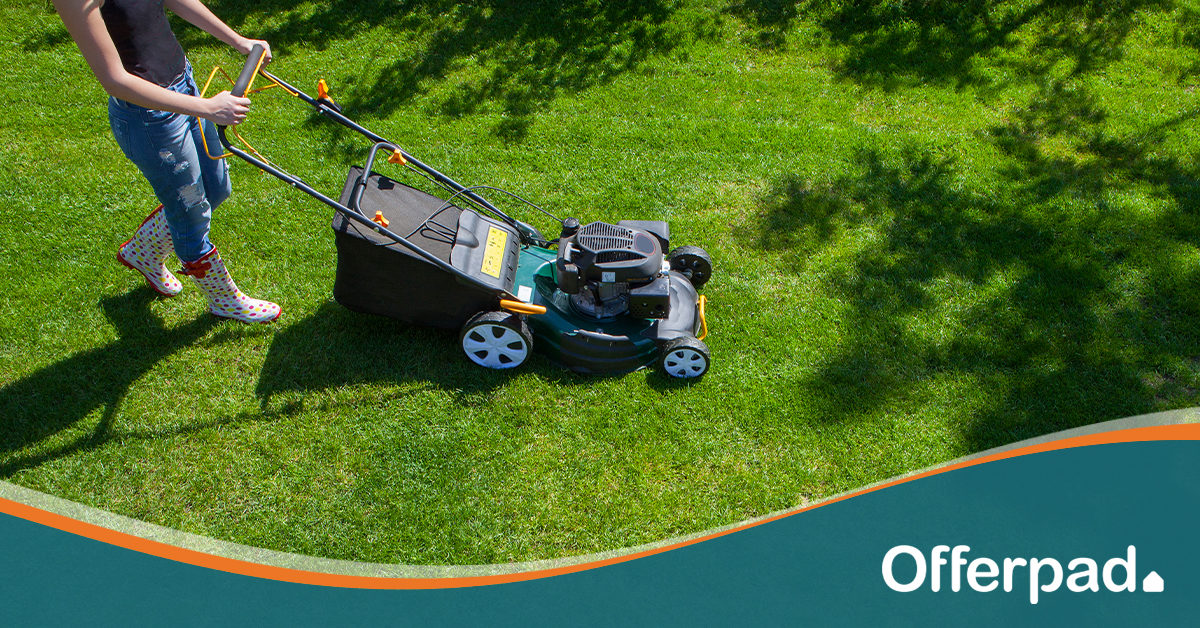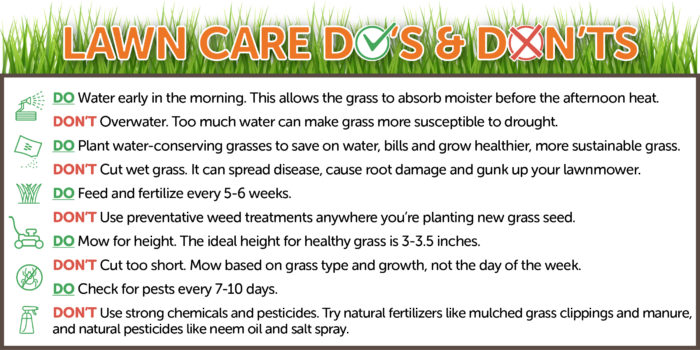
Ah, spring! The time of year homeowners and landscapers start digging in to make sure the grass stays greener on their side of the fence or sidewalk.
Did you know that a healthy lawn can add to your home’s curb appeal? In fact, homes with high curb appeal tend to sell for an average of 7% more than similar houses with a less inviting exterior.1
To help turn your neighbors green with envy over your own lush lawn, we’ve put together some common tips and recommendations from lawn care companies and other pros on the do’s and don’ts of proper lawn care.
Let’s dig in!
The Grass Is Always Greener
Knowing the best-growing grasses for the area you live in can help you avoid potentially costly mistakes when it comes to turning your turf into the greens golfers dream of. In general, cool-season grasses, such as Kentucky bluegrass, are well suited for northern zones. Warmer climates are more welcoming to Bermuda and other grasses that can take the summer heat. With region-appropriate grasses for your lawn you may be able to use less water, fewer lawn-care products and save time on yard work.
In addition to making sure a particular grass is adaptable to your area, look for qualities such as durability and how it feels under your feet. There are many types of turfgrasses to choose from. Here’s a handy list the EPA put together for finding climate-appropriate grasses your lawn will love.
Test Your Soil
Whether starting a new lawn or continuing to cultivate your current one, before breaking out the seed spreader and sharpening the lawn mower blades, lawn pros recommend testing your soil. This gives you a good baseline for grass-growing essentials such as soil pH and nitrogen levels.
Get test kits and information on soil labs from your local nursery, county extension office or agricultural agent. Take separate samples of your lawn’s problem areas, such as bare spots, thinning brown patches (which may be a sign of grubs), or lawn moss, so you can get recommendations on what your lawn needs to be its best.
Seed According to Season
Many homeowners think spring is the best time to seed their yard, but it really depends on where you live and the type of grass you’re planting. Like their namesakes, warm-season grasses should be planted in the spring. In most regions March may be too early, so you may want to wait until daily temps average about 80 degrees. Cool-season grasses do better when planted in the fall.
Choose high-quality seeds with minimal filler. Check expiration dates on seed packages. Lawn experts also caution against applying fertilizer and seed together when seeding a lawn. It’s best to spread fertilizer first, they say, then plant your grass seed.
Ready, Set, Grow!
Once grass seeds have germinated and your lawn starts to fill in, keep it healthy, green and growing with these lawn care do’s and don’ts.

The Work Is Worth It
The work it takes to keep up a beautiful lawn is well worth it when you consider what you get out of it. In addition to the pride of homeownership you’ll feel, a well-maintained lawn and landscaping may improve the appearance of your home and your family’s enjoyment of it. (Who doesn’t love running barefoot through the grass?)
It also helps the environment. Did you know that turf grasses help clean the air of dust and dirt, along with other impurities? Well-maintained grass lawns can also help reduce the risk of fire hazards and slow runoff from storm water, allowing it to be absorbed into the ground instead of running into storm drains.
Thinking of putting your home up for sale? Use the tips above to help bump up your home’s curb appeal, then check out Offerpad’s FLEX listing options. In addition to a cash offer in your back pocket while you’re listed with us, we help get your home show ready with free services including landscape cleanup, pool services and more.*
*Eligibility and prices vary. Terms and conditions apply. To learn more, speak to your Offerpad representative or visit offerpad.com/flex.
1National Association of REALTORS®. “How Much Does Curb Appeal Affect Home Value?” Jan. 27, 2020. REALTOR® Magazine.

Leave a Reply